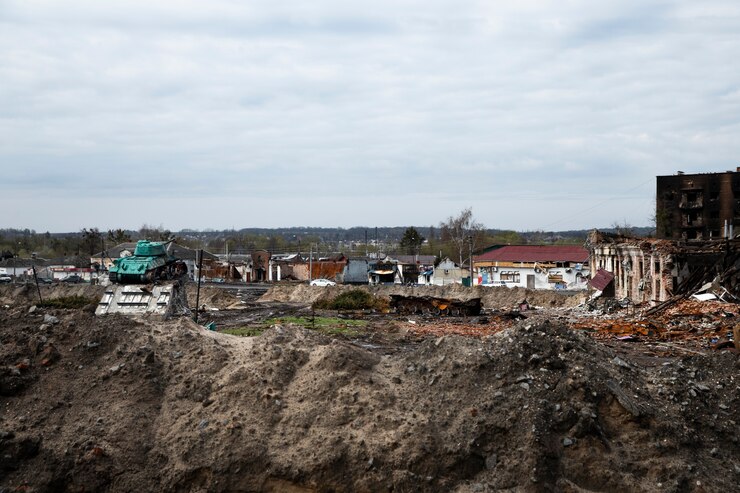Disasters can come in many forms, and their duration can range from hourly disruptions to weeks. These disasters can be caused by nature, man-made, or by technology. Below is the list of various types of disasters.
Natural Disasters
- Earthquakes: An earthquake is defined as a sudden and violent shaking of the ground which is caused by movements within the Earth’s crust. These seismic activities are caused by the release of energy from tectonic plates shifting and grinding against each other. Earthquake-originating points are known as the focus, while the point directly above it on the surface is the epicenter.
- Impact: Earthquakes have the potential to cause significant damage and result in personal injury and loss of life. The risks of casualties are increased in areas where buildings are poorly constructed and where populations are dense. Secondary disasters like tsunamis and landslides are common consequences. These can further complicate rescue efforts and cause additional destruction.
- Floods: Flooding is when water covers land that usually doesn’t get flooded. This can be caused by heavy rain, storm surges, snowmelt, or dam failures. Though coastal areas get floods because of storm surges heavy rainfall can also lead to inland floods.
- Impact: Floods damage property and cause economic losses. People may have to leave their homes and find shelter. Contaminated water causes disease and damages the environment. The emotional impact on those affected is huge.
- Hurricanes: Hurricanes are intense tropical storms characterized by powerful winds, heavy rainfall, and storm surges. These systems form over warm ocean waters and gain strength as they move. At the center lies the eye surrounded by an eyewall where the most severe weather occurs.
- Impact: Hurricanes can destroy large areas with strong winds up, rooting trees and damaging power lines. Oftentimes, rain and storms come along with surges that can flood entire communities. It can disrupt the infrastructure and services, make it hard to respond to emergencies, and cut off affected areas.
- Wildfires: Uncontrolled wildfires can spread quickly through vegetation, burning forests and grasslands. Dry weather can cause high temperatures and strong winds, and that is what makes them spread faster. Wildfires can be the result of natural or human-made events.
- Impact: Wildfires wreak havoc on environments and human communities alike. Homes and neighborhoods can be destroyed, which forces mass evacuations and significant property loss. Wildlife habitats suffer from many species being displaced or killed. Smoke from wildfires poses serious health risks and long-term impacts on local economies dependent on tourism and natural resources.
Man-Made Disasters
Industrial Accidents: Industrial accidents occur in settings like factories and construction sites due to equipment failure, human error, or inadequate safety measures. Examples include machinery malfunctions, explosions, and chemical spills.
- Impact: These incidents can lead to severe injuries, fatalities, and significant environmental pollution. Contaminated air, water, and soil pose long-term health risks. Additionally, the economic impact extends to operational downtime, legal liabilities, and damage to corporate reputations.
- Chemical Spills: Chemical spills involve the accidental release of hazardous substances into the environment. These can happen during transportation storage or industrial processes. Common chemicals include petroleum products and toxic solvents.
- Impact: Chemical spills can lead to immediate health hazards such as burns, respiratory issues, and poisoning. Long-term environmental damage is also a concern affecting soil, water, and wildlife. Cleanup of things is expensive and complex and requires specialized equipment. Communities may face displacement and economic loss while health risks and environmental concerns linger.
- Nuclear Disasters: Nuclear disasters involve the release of radioactive energy, often resulting from accidents at power plants or mishandling of radioactive materials. Causes range from equipment failure and human error to natural disasters.
- Impact: Radioactive contamination can have lasting effects on air, water, and soil. Health risks include radiation sickness, cancer, and genetic mutations. Affected areas often become uninhabitable, displacing populations and leading to exclusion zones. The economic impact involves decontamination costs, healthcare, and compensation. Public trust in nuclear energy may diminish, leading to stricter regulations and policy changes.
- Terrorism: Terrorism refers to deliberate acts of violence aimed at instilling fear and achieving political, ideological, or religious goals. Common methods include bombings, shootings, and kidnappings.
- Impact: Terrorist attacks result in loss of life, injuries, and psychological trauma. Survivors often suffer from PTSD, anxiety, and depression. Economically, terrorism disrupts communities by damaging infrastructure, reducing investor confidence, and increasing security costs. Social divisions and fear within affected areas can exacerbate the situation, highlighting the need for comprehensive counter-terrorism strategies.
Connect with BCG if want to ensure that your business is prepared and ready to respond to unexpected events that can disrupt operations. Our disaster recovery consulting services ensure your organization is ready to bounce back quickly after a crisis.
Preparation for Disasters
Preparation for disasters helps you minimize the risk, reduce the impact, and provide an effective response. There are many steps involved, and here are some of them.
- Identifying Potential Risks
- Analyzing the Vulnerability of Communities and Infrastructure
- Developing Emergency Response Plans
- Establishing Communication Protocols
- Training and Drills
- Ensuring Availability of Emergency Equipment
Conclusion
Disasters can create ripple effects far beyond the immediate destruction they cause. This convergence pushes us to rethink disaster preparedness—not just as a reactive measure but as a holistic strategy that incorporates everything from community education to global cooperation.
Every disaster comes with a lesson in how we can better protect and rebuild together—something that can help us navigate an increasingly unpredictable world.



